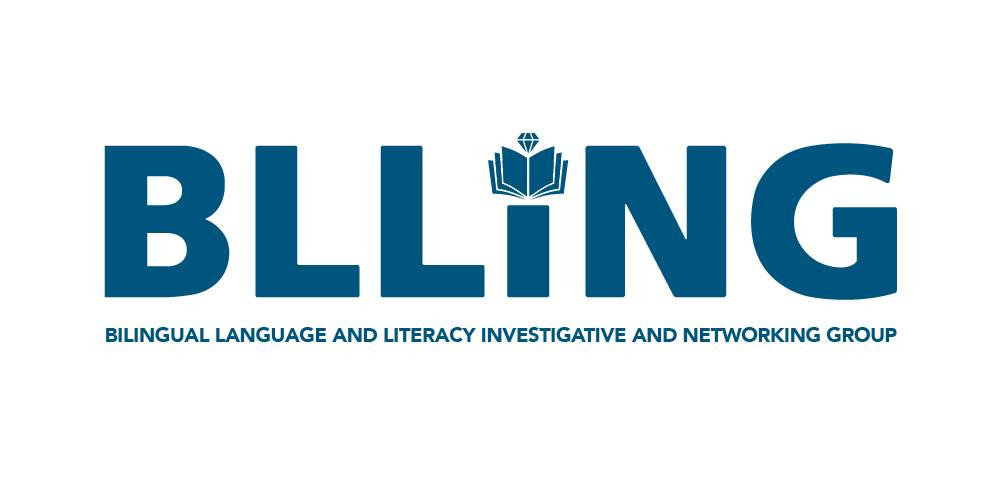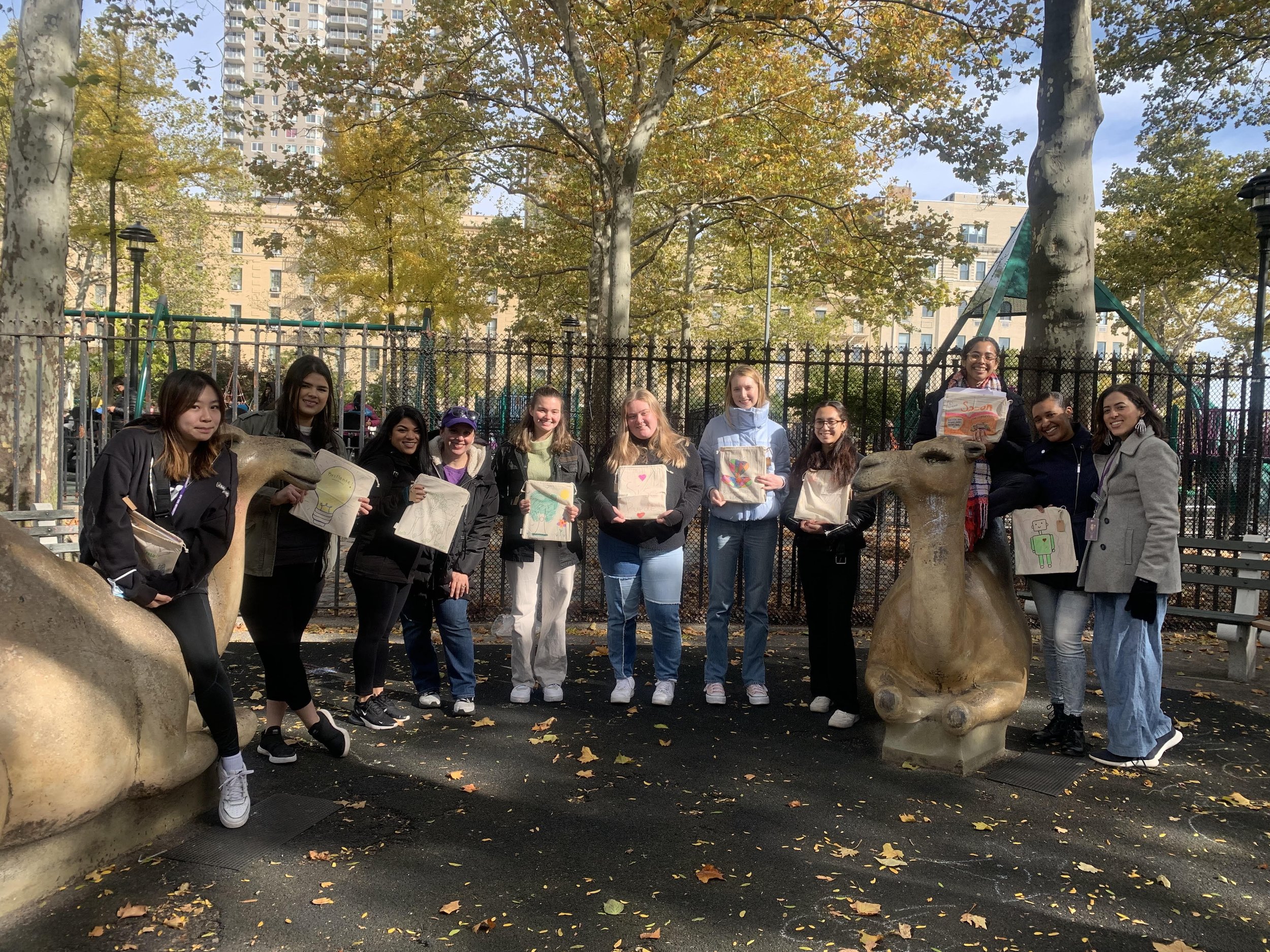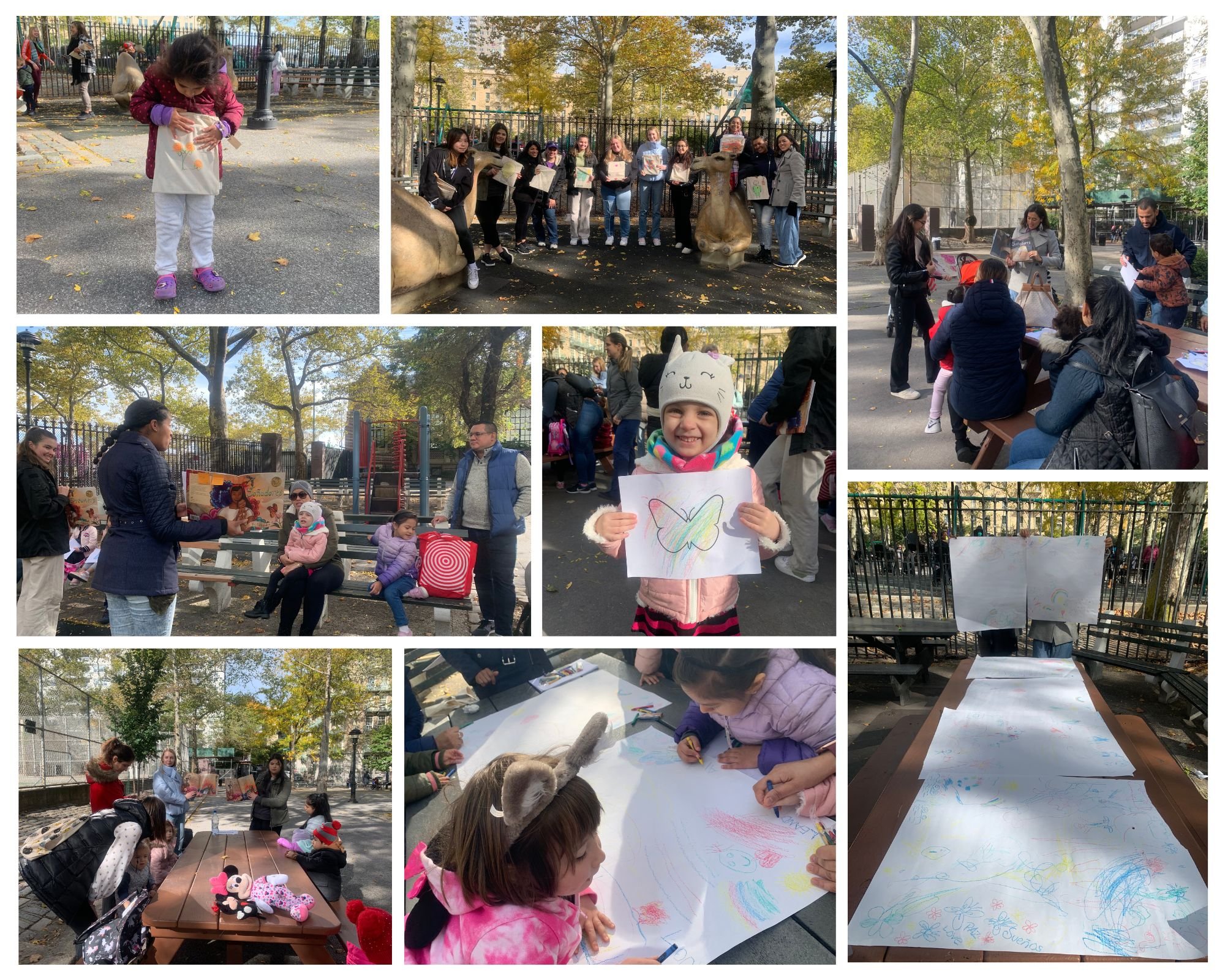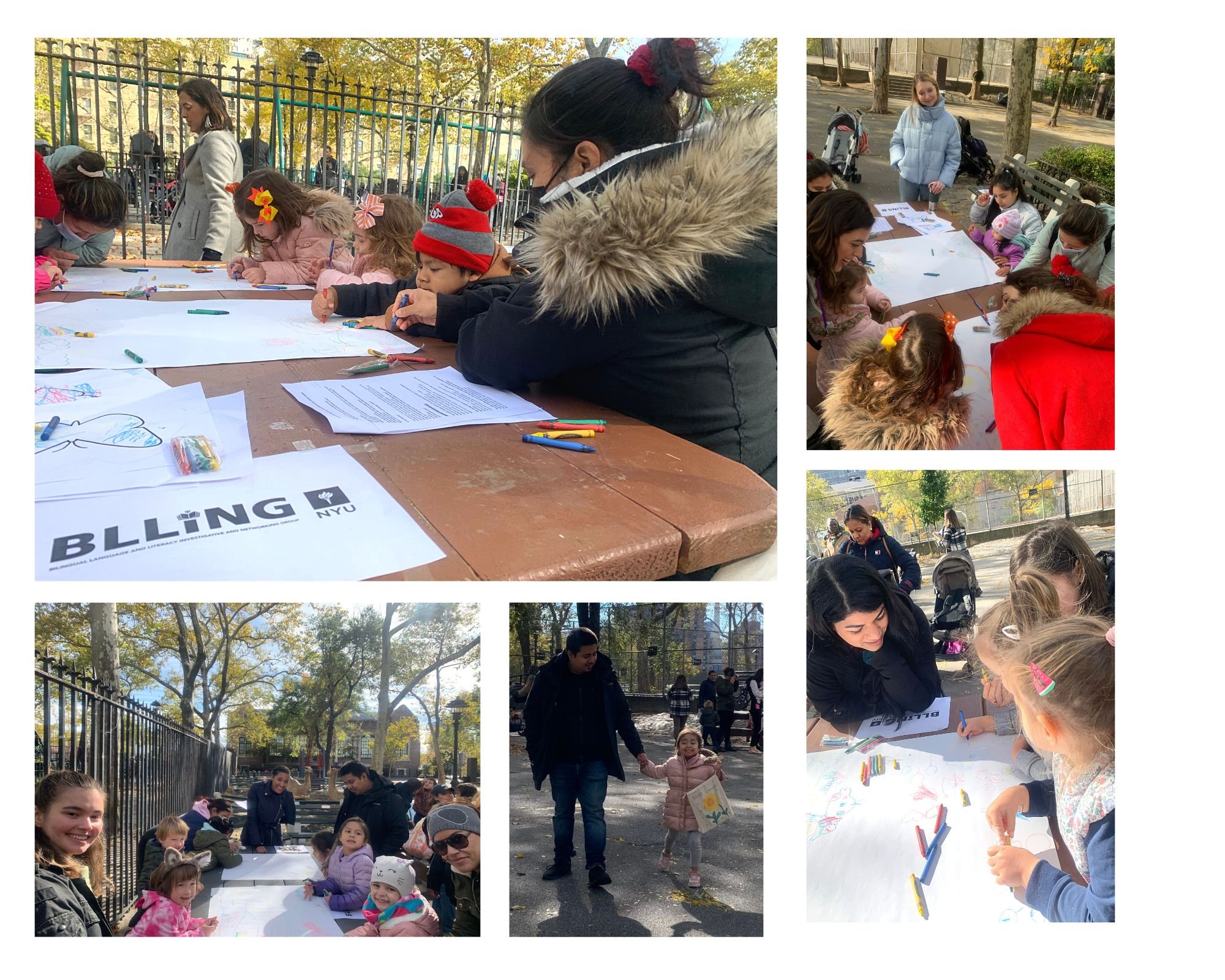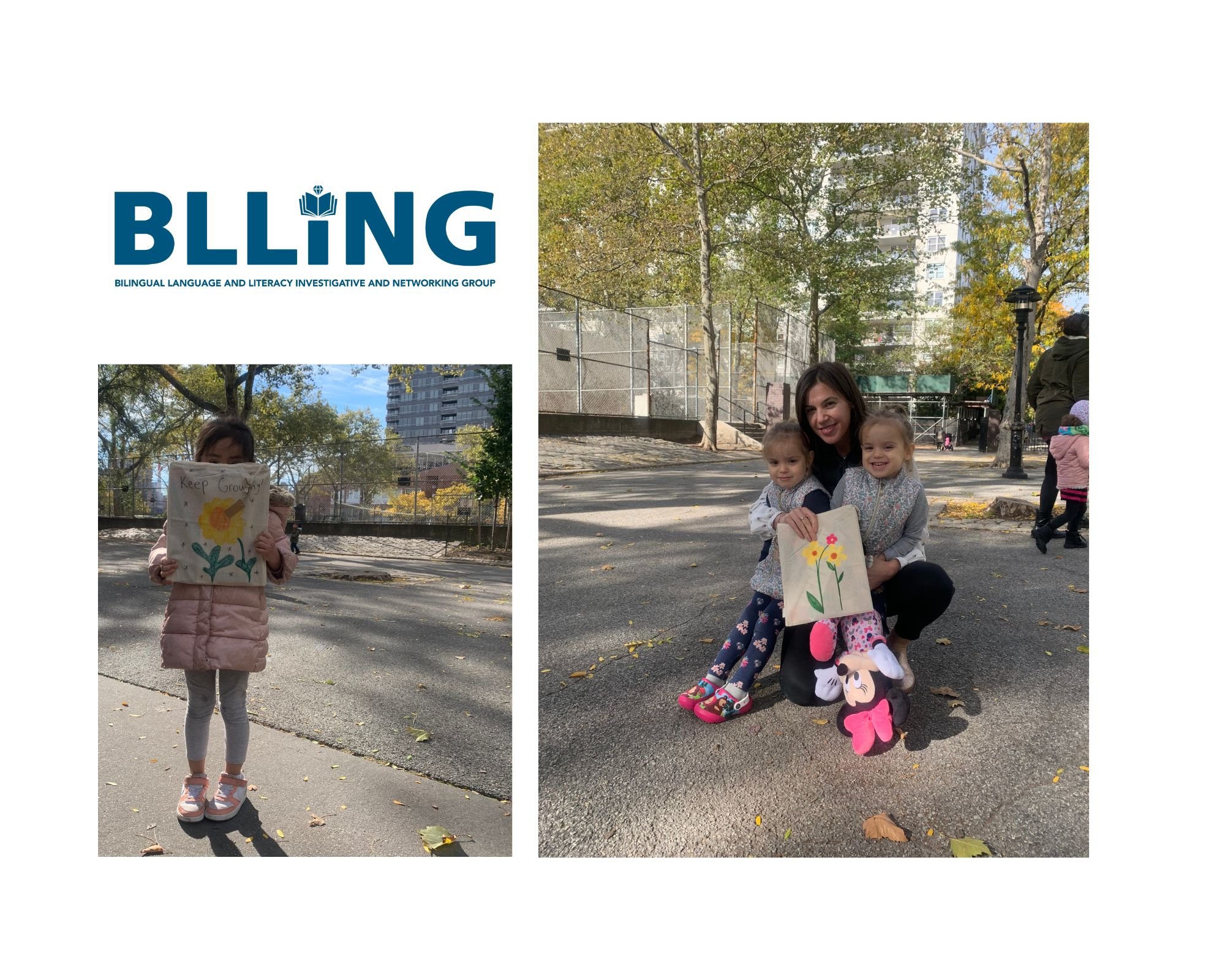Here’s a summary of a little interview Dr. Brea gave recently on Bilingual Assessments.
1. Tell me a little bit about yourself
I’m an immigrant from the Dominican Republic. I moved to the United States with my family when I was 17 years of age. I speak, read, and write in Spanish, as well as in English. My desire to pursue Speech-Language Pathology and to study, within this field, ways to support multilingualism and literacy, then, stemmed from curiosity for learning the theoretical and linguistic bases that might explain my own bilingual development and from a need to support other students, children, families, who, like me, have had to evolve their identities, as they learn to navigate a majority culture. I pursued my doctorate, first because I’m a total theory nerd, and secondly because I have a passion for empowering students regardless of whether they are monolingual or multilingual, to embark on a journey of culturally and linguistically sustaining learning in order to support Speech-Language Therapy as a field.
2. Please tell us about what is important to consider when assessing bilingual school kids?
Many aspects are important. I’ll summarize into two major areas:
For the clinician –the goal is to implement culturally responsive and sustaining assessment practices, which involves being self-aware, expanding what I call their circles of knowledge. To me, SLPs have three major knowledge areas in which they need to receive training and experiential opportunities. First, they need to grow their conceptual knowledge circle which may include theoretical views of bilingualism as a dynamic phenomenon, having some knowledge of the laws governing the provision of bilingual education, and how SLP fits within these laws; they need to know how a bilingual’s brain may be different from that of a monolingual’s brain in terms of processing and access of information, and in terms of cognitive resources. A culturally responsive clinician who has accumulated conceptual knowledge is also well aware of the systemic barriers imposed on by the standardized testing industry. And these are individuals who advocate against test translation. Translation of tasks doesn’t provide us with an accurate nor valid representation of an individual’s integrated linguistic repertoires. Tests that are devised for a certain population include the knowledge of that certain population in the consideration of included items and in the interpretation of their scores. Items that are translated are not the same 'level' as the original item. Say for example, you're having a person count the syllables in the word beetle in English - the translated word into Spanish is escarabajo - much longer and much complex word though the same meaning. A number of my colleagues have written on these drawbacks and have pursued and provided alternatives to these tools.
Secondly, culturally responsive and sustaining clinicians are naturally curious and intentionally open to learning from a metalinguistic perspective about their English/es and other languages, their form and content. You could say that the culturally responsive clinician has an ever emerging linguistic knowledge circle. Finally, they need to evolve their understanding of culture (cultural knowledge circle) beyond a list of bulleted differences and find ways to define their own cultural belief system. I find that is useful to apply the funds of knowledge perspective to ourselves and to the families/ clients/ students with whom we interact. This framework allows us to realize that we all carry a set of cultural expectations, practices, understandings, and that these are dynamic and malleable, and sprinkled onto our lives in our everyday rituals and routines. This, too, allows clinicians to begin to identify their biases. We all have different ‘lenses’ through which we perceive and filter the world about us. Being aware of which degree of magnification I’m wearing to investigate a specific phenomenon or interact with a specific culture or micro- or meso-system (to use Bronfenbrenner’s ecological systems approach, too), is essential.
In regard to specific practices with the student/ family: Focus on collecting a myriad of snapshots in a short period of time, through a thorough language background and ethnographic questionnaire, identifying relevant elements in the family history, weaving data points that suggests the learning strengths and areas of further development, and ensuring our tools not only exemplify, but empower the cultural expectations of those we evaluate, are some of the essential pieces. Key here is being asset-based.
3. Walk us through a comprehensive assessment for a bilingual
– keep in mind that the specific tools to use will vary depending on presenting problem and child’s developmental level.
In recent years, I’ve taken to adapting a framework of assessment/ differential diagnoses created by Elaine Silliman and Virginia Berninger in 2011. They suggest the importance of collecting data pieces to ‘create’ a developmental profile, a learning profile, and (checking the literature) a phenotypic profile in our assessment practices. I’ve added to this the cultural-linguistic profile, since we are dealing with diversity in general. I actually would argue that we need that cultural-linguistic profile in ANY and all evaluations regardless of whether we are dealing with cultural or linguistic diversity or other types of diversity. But, I digress...
1. Gather information on the child’s developmental profile - Conduct a thorough review of a case/ or if no case file is available (or previous reports or IEPs), then ensure you develop a set of open-ended, thoughtful questions to allow you to gain a good overview of the child’s development across 5 domains (sensory and motor, cognition and memory, socio-emotional, attention and executive functions, and oral language). Pay close attention to caregivers expressing their ideologies of language, multilingualism, development, disability, as they are summarizing the development of language universals (if the child is young, like k or 1st grade) and also to note if there is a history of language or literacy disabilities in the family. Ask the family if there are concerns and also, most importantly, of the areas of strength in their children’s communication. According to Kohnert (2012) if there are descriptions of differences in the learning of language universals, if there are family concerns, if caregivers indicate a slow plateau in a second language at the same time as a rapid decrease in abilities in the first language, there may be a language delay or disability. But, because we don’t always have access to caregivers, at times this detailed information may be difficult to obtain. If you are unable to collect answers to your developmental questions before the evaluation, think about adding a few questions during the eligibility staffing. Finally, children who have intertwined disabilities (e.g., dyslexia and dysgraphia) may not have become aware of their own differences in learning, until literacy was introduced. For this purpose, collecting data pieces on the other profiles may be highly beneficial.
2. Gather information on the child’s cultural-linguistic profile – A thorough ethnographic interview using skilled dialogue techniques is most important, but in schools, we often rely on limited information gathered in the language background questionnaire. Ask about contexts, purposes, and needs for languages. I am a bit more flexible with this language, based on my own experience as a diagnostician. We all have areas in which we feel ‘stronger’, not all of us have received instruction in our languages, thus, why expect that we could test in both? I say, determine contexts of use, needs for the languages and then find a way to incorporate this information into the assessment process. Note, here, that I am not suggesting that testing MUST occur in one language or in all languages. This is a decision/ approach that varies depending on the needs and desires of the client. I’m flexible with my approach, just like the students I evaluate are flexible with contextualizing how their languages figure in their lives.
3. Peruse the literature to collect phenotypic profile when appropriate (in cases of LI, Dyslexia, and Dysgraphia) there are data-based articles that suggest which areas of language and cognition may be involved in the disorder, and which tasks can be used to get some type of measurement of those areas. Understand that tasks are merely tools, and that there is no measure that, alone, arrive at a diagnosis of language impairment. Also keep in mind these studies may not be coming from an ‘insider’s’ voice - meaning the researchers conducting the research may not be disabled themselves. This is relevant in the narratives proposed about our clients.
4. Gather information on the child’s learning profile – Use your connections to teachers and other school practitioners to obtain a picture of the child as a learner. Portfolio assessments, observations within the classroom to identify academic areas in which the child is succeeding may be useful pieces. Conduct observations, of the classroom ecology, the students’ academic strengths and areas were different ways of representing information or acquiring responses through teachers’ scaffolding is successful. Check for results of previous testing.
5. Develop your assessment process to collect a holistic picture of the child’s skill-set. In this process – research the languages themselves, identify similarities and differences, be ready to ‘give credit’ and identify patterns of transfer that the child may be using unconsciously but also create opportunities for the bilingual mode of communication to be used – use translation tasks, use tasks in which you are translanguaging (i.e., using the full repertoire of the client - not the same as code-switching) I use naturalistic tasks, like narratives or language samples, expository written essays, and some standardized tasks. My evaluations usually involve tasks that focus on oral language, tasks that focus on literacy, and tasks that focus on language processing (e.g., like nonword repetition) – for some literacy cases. For cases in which there is a need to garner a full picture of complex communication needs, then it’s important to also have a thorough observation or collection of intentional communicative acts, gestural language use, usability of different devices. For cases in which speech sound productions are the clients’ focus– then, a collection of a speech sample and a standardized task. I do not advocate for the practice of accent modification or reduction, as this is not a practice rooted in linguistic justice.
4. What’s your take on standardized tests for bilinguals? (be cautious, modify, don’t report scores?) –
Well... I’m fortunate to live in a state in which the rules are very flexible. I have colleagues who have contributed to NYS not using standardized scores in eligibility procedures. However, I also know that this is not reality in other states. You may have to use standardized assessments. If you do and if scores are required, then be sure to understand that the tests themselves are a snapshot in time of a group of kids that were potentially very different from the kid sitting across the table during the evaluation. If you must report standard scores, do so while including a statement that suggests to your audience the need for caution in interpretation. Include product tasks, like narratives and expository writing tasks, language processing tasks, and tasks that require translanguaging so you are able to explain in the IEP summary section or your summary in your clinical report how the child performs. If you can report raw scores in reports as a means of quantifying knowledge in a specific test task, do so for descriptive purposes only.
There are tests in the market that allow for holistic ‘conceptual scores’ to be reported – where answers in either language can be counted, so when possible, you can use these assessment tools (with the great caveat that we don’t have access to all such tasks in all languages, nor has the research yet revealed that lexical, phonological, and syntactic storage, access, and production happen in the same ways across linguistic systems. Be flexible. Blanket decisions about what to do based on a child’s exposure to a language do not take into consideration that languages are dynamic systems. So perhaps the best advice I can give is work within your institutional constraints but grow in your linguistically and culturally responsive practices so you can include qualitative data that either support or refute the testing and provide the people making the decisions (like insurance companies, in some cases) with what they need, in order to give the child/teen/young adult equitable services and a the best case for supporting communicative justice.
One final note: If you only speak/ read/ write one of the languages of the student you are about to evaluate, you have a responsibility to research what you don’t know, to collaborate with interpreters and translators who will help you bridge the tasks for the student in front of you. Regardless of how many languages we speak, we are all monolinguals in one context or another. Similarly, we shall all be empowered to continue our evolution as culturally and linguistically responsive clinicians.
Keep on rockin’ the world, Rock Stars!
Dr. B
